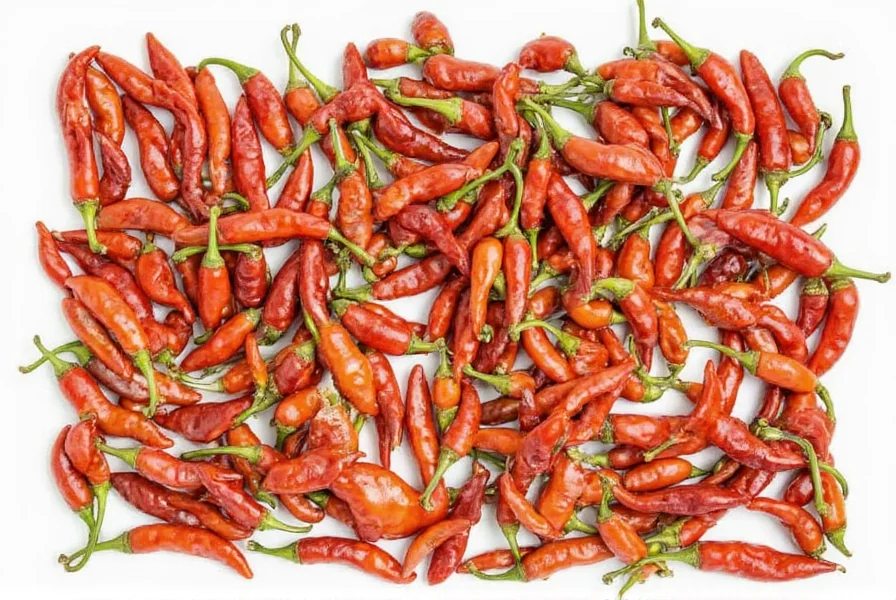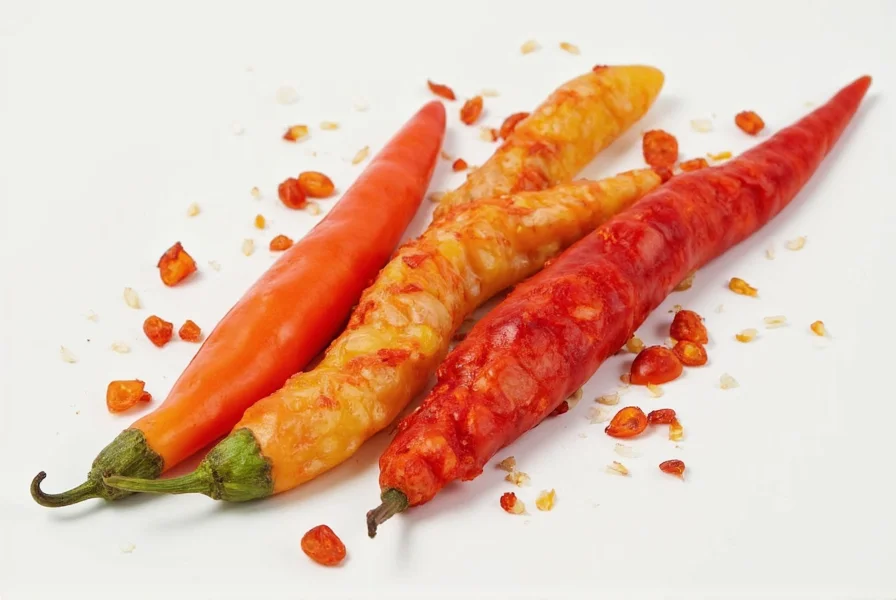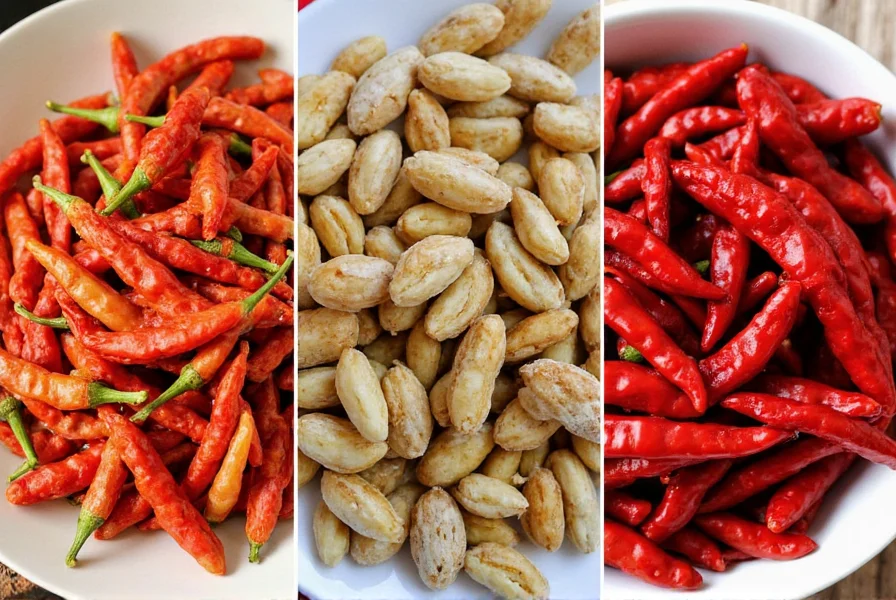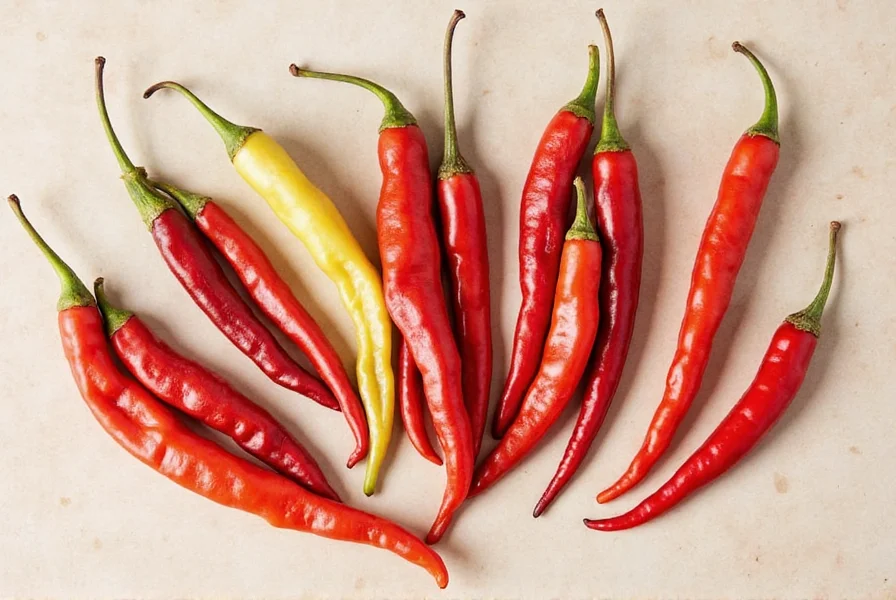Chile Seco Showdown: Which Dried Chile Should Be Your Kitchen MVP?
Table of Contents
- The Allure of Chile Seco
- Buying Guide for the Best Chile Seco Varieties
- A Taste Tour: Popular Chile Seco Varieties
- Pro Tips for Using Chile Seco Like a Pro
- How to Cook with Chile Seco: Techniques and Tastes
- Comparison Table: Chile Seco at a Glance
- Flavor Pairings That Make Chile Seco Shine
- Final Thoughts: Let Chile Seco Steal the Spice Spotlight
The Allure of Chile Seco
If you've ever opened a bag of dried chiles and been hit by that earthy, smoky aroma, then you already know the magic of chile seco. These are not just spicy snacks for your pantry — they're full-bodied flavor bombs waiting to explode in your cooking.
From the deep red hues of guajillo to the rich complexity of ancho, each chile seco brings something unique to the spice rack. Whether you're simmering up a mole sauce or spicing up a batch of salsas, these dried chiles can elevate your dishes from everyday eats to gourmet glory.
Buying Guide for the Best Chile Seco Varieties
When it comes to selecting the right chile seco, not all are created equal. Here’s what to look for when shopping:
- Bright Color: The deeper and more vibrant the color, the fresher the chile. Look for deep reds, warm browns, and even some purplish tones depending on the variety.
- Firm Texture: A good dried chile should be pliable but not brittle. Avoid any that crumble easily — that’s a sign of age.
- Aroma: Fresh chiles have a strong, complex scent. If it smells musty or stale, pass it by.
- Skin Quality: Smooth skin without mold spots or holes is key. Check for signs of pests or moisture damage.
Best Brands & Products
| Brand | Variety | Features | Best For |
|---|---|---|---|
| La Costeña | Ancho | Premium quality, consistent flavor | Mole sauces, soups |
| Goya Foods | Guajillo | Affordable, widely available | Salsas, marinades |
| Don Julio | Chipotle | Smoky depth, great heat | Barbecue, stews |
A Taste Tour: Popular Chile Seco Varieties
Let’s take a tour through some of the most popular chile seco options out there and see what makes each one special.
Ancho
The mild-mannered hero of Mexican cuisine, the ancho is the dried form of the poblano pepper. With a sweet, fruity undertone and moderate heat, it's perfect for sauces like mole negro.

Guajillo
Guajillo offers a medium level of heat with notes of berries and tea. It’s a staple in salsas, adobos, and marinades — especially for meats.
Chipotle
Dried and smoked jalapeños, chipotle brings both heat and that unmistakable barbecue flavor. Perfect for moles, soups, or even Bloody Marys.

Pasilla
Dark, slender, and deeply flavored, the pasilla has hints of raisin and licorice. Often used in sauces and complex dishes where depth is key.
Pro Tips for Using Chile Seco Like a Pro
You’ve got your chiles, now what? Here are some tips to get the most flavor out of every pod:
- Rub and Toast: Lightly toast your chiles in a dry pan before use to bring out their oils and aromas. But don’t burn them — that’ll add bitterness.
- Remove Seeds and Veins: Most of the heat lives here. If you want less fire, remove them; if you’re after a punch of heat, leave them in.
- Rehydrate First: Unless you're grinding into powder, always rehydrate chiles in hot water, broth, or alcohol (yes, tequila works!) for 20–30 minutes.
- Blend Thoughtfully: After soaking, blend the chiles with some of the soaking liquid to preserve the full flavor profile.
How to Cook with Chile Seco: Techniques and Tastes
Cooking with chile seco opens up a world of flavor possibilities. Here are a few techniques to master:
- Make a Base Sauce: Blend soaked chiles with garlic, onions, vinegar, and spices to create a paste that can be frozen and used as the base for future dishes.
- Add to Stews and Soups: Throw whole chiles into broths to infuse a background layer of heat and smokiness.
- Use in Marinades: Combine chile puree with citrus juice, oil, and herbs for a powerful meat or vegetable marinade.
- Create Spice Blends: Dry grind chiles with salt, cumin, and oregano to make custom rubs for grilling or roasting.

Comparison Table: Chile Seco at a Glance
| Chile | Heat Level (Scoville) | Flavor Notes | Best Used In |
|---|---|---|---|
| Ancho | 1,000–2,000 | Sweet, Fruity | Moles, Sauces |
| Guajillo | 2,500–5,000 | Berry, Tea-like | Salsas, Marinades |
| Chipotle | 5,000–10,000 | Smoky, Peppery | Stews, Barbecue |
| Pasilla | 2,500–4,000 | Raisin, Licorice | Complex Sauces |
| Morro | 1,000–3,000 | Nutty, Tart | Soups, Rice Dishes |
Flavor Pairings That Make Chile Seco Shine
Spice doesn’t work in isolation — it sings when paired with the right ingredients. Here are some dream team pairings for chile seco:
- Chocolate: Dark chocolate + ancho = mole heaven.
- Garlic: Amps up the savory depth in chipotle-based sauces.
- Lime: Brightens up guajillo salsas and balances heat.
- Cumin: Adds warmth and rounds out pasilla-based dishes.
- Cinnamon: Enhances sweetness in anchos and adds warmth to mole.
Final Thoughts: Let Chile Seco Steal the Spice Spotlight
Whether you're a weekend cook or a seasoned chef, chile seco deserves a permanent spot in your kitchen. From mild and fruity to smoky and bold, these chiles offer a range of flavors that can transform any dish into something extraordinary.
So next time you reach for the crushed red pepper flakes, pause and consider the power of a good chile seco. With the right selection and technique, your meals will never be the same — and that’s a spicy promise.












 浙公网安备
33010002000092号
浙公网安备
33010002000092号 浙B2-20120091-4
浙B2-20120091-4